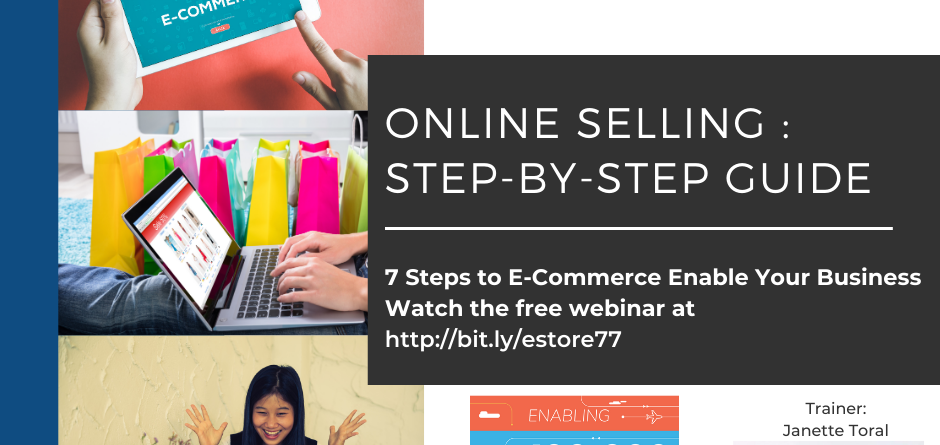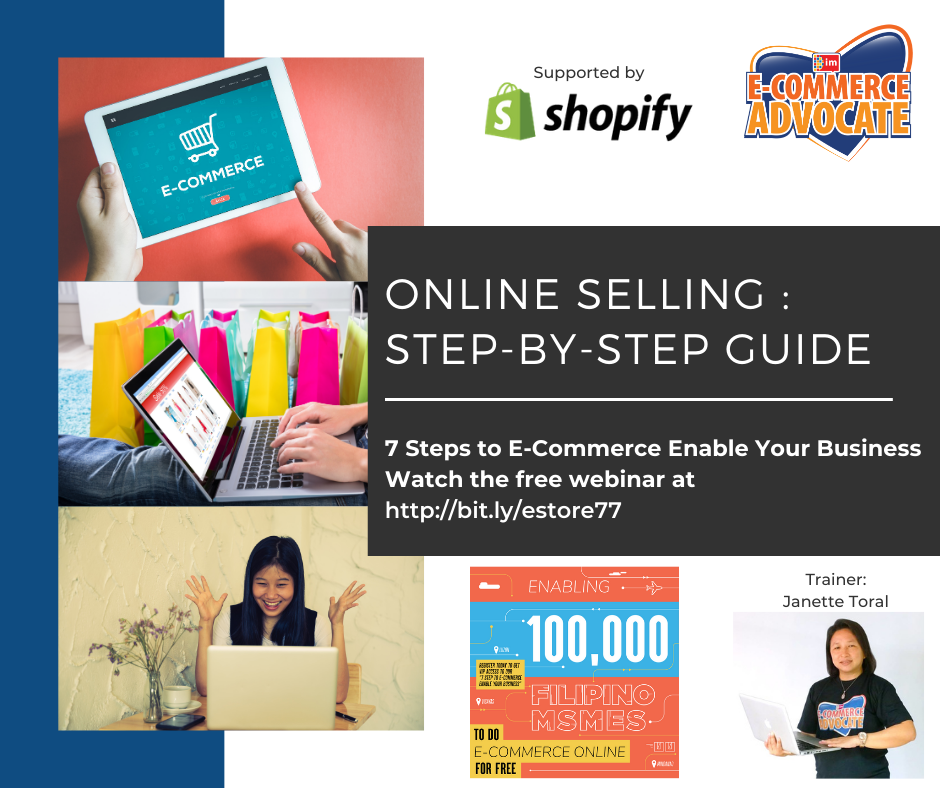Online Selling: Step-by-Step Guide in Creating a Website Using Shopify
My warm thanks to readers who joined our webinar about “Online Selling for the Holiday Season” and “7 Steps to E-Commerce Enable Your Business”. This was made possible with the support of Shopify.
The Covid-19 pandemic has required MSMEs and exporters to explore e-commerce strategies and digital marketing approaches for business survival, resilience, and recovery.
Celebrating the 21st year of DigitalFilipino.com and 20th year of the Philippines E-Commerce Law (Republic Act 8792), this e-commerce mentoring program for MSMEs and Exporters aims to help you with web presence creation, online payment acceptance, logistics/fulfillment options, digital marketing approaches, business model tweaking, among others.
Here are the steps you can take in building your website.
Step 1: Set-up E-Commerce Website
Participants are encouraged to sign-up for the trial of Shopify to carry out the design steps that will be shown here at https://bit.ly/shopify77
Should you like to build an e-commerce site using WordPress, watch the tutorial video there.
You will need a domain name for your site. You can buy this at Shopify or get it from domain providers like GoDaddy where you can also get web hosting (especially if you want to use WordPress instead).
Step 1.2: Watch the Tutorial Video to Follow the Process
I recently had a webinar explaining the process. Please watch it and follow the step-by-step process.
Here are some notes to take note of as you watch the video.
Step 2: Create Content to Promote Your Products & Services
-
Create “Collections” (Click on Product>Collections)
This allows you to create product categories. That way, when you enter your products, you can easily select the collection where it can be grouped in.
-
Add Products (Click on Product>Add Product)
Start adding your products by adding the proper title, description, photo or image or video, tags, and vendor.
If you have multiple choices in each product like a group offer, colors, etc., add variation too.
-
Configure Theme (Click on Online Store > Theme > Customize)
Edit the header, sections, and footer to add the necessary content. Make sure your website clearly articulates the problem you are solving, details about your product or service, the biggest result your customer will get, and how can they buy it.
-
Add Pages (Click on Online Store > Pages)
Add the necessary content to build trust and credibility. At the minimum, it should have your “About” (introduce your company or yourself) and “Contact” (how to get in touch with you) pages.
-
Add Policy Content (Click on Settings > Legal)
As required by various laws and e-commerce platforms (payment, email marketing, advertising), the following policies are required:
– Data privacy policy (how you will use and protect visitors and customer data)
– Terms & Conditions (how to use your site – do’s and don’ts, expectations, disclaimers, etc.)
– Shipping Policy Conditions (expected turnaround time for orders)
– Return and Refund Policy (conditions to get a refund for products/services paid for and how to return a product/service)
Step 3: Configure Payment Options (Click on Settings > Payment)
Connect your Paypal account to accept credit card and Paypal payments. You can also configure manual payment instructions including COD, bank deposit, mobile payments like GCash, PayMaya, and other payment acceptance means.
Step 4: Configure Shipping (Click on Settings > Shipping)
Set rates for domestic and international shipping. You can also give free or lower shipping rates depending on product weight or total purchase amount.
Step 5: Configure Sales Channels (Click on Settings > Sales Channels)
- Connect your Facebook account. Make your products appear on the Shop section of your chosen Facebook Page. This only applies to allowed products (not services).
- Connect your Messenger to allow people who visit your site to message you. Visitors who visit your Facebook Page and message you will also be able to browse through your products.
Step 6: Market and Keep Your Customers Engaged (Click on Marketing)
- Come up with a content plan designed for your star client and product niche. Use direct messaging, email, calls, social media, advertising, and other means to educate, build credibility, and promote your products/services.
- Use Shopify Email to engage your newsletter subscribers and customers who bought products from your site.



Leave a Reply